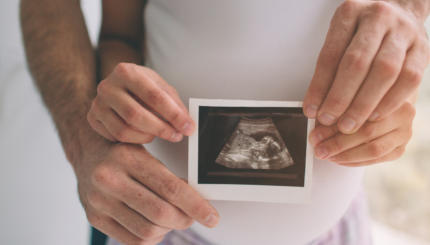For more about Jewish parenting, visit our partner site, Kveller.
One of the wonderful things about planning a brit bat (or simchat bat) is that in many ways the family can choose from a wide range of options — or even craft their own ceremony. As a relatively new lifecycle ritual, though one rooted in ancient tradition, this event has neither a fixed form nor predetermined content, which means that if you are planning a ceremony for a new daughter, you can it to reflect the family’s personality and orientation toward Judaism.
That being said, over the three decades that parents have been welcoming their daughters with ceremonies meant in some way to parallel that of brit milah for boys (that is, to give equal weight to the birth of a daughter), a certain loose structure has emerged. It is one which makes logical sense, and follows the flow of elements in other Jewish lifecycle rituals, including brit milah.
With your help, My Jewish Learning can provide endless opportunities for learning, connection and discovery.
Here are the most common elements in a Jewish girl’s naming ceremony and their order:
A song.
Singing together is a powerful way to create a sense of holy space, to distinguish the time of the ceremony from that which preceded it, and to bring everyone together in fellowship. Someone leads people in a Jewish traditional wordless tune, called a niggun, which is easy for people to join in on, or a contemporary Jewish or meaningful secular song.
An introduction welcoming everyone to this joyous occasion
This is a time to outline what guests should expect and note the presence of honored people in attendance–rabbis, special friends and relatives, and anyone else who has had a notable role in the baby’s first weeks of life.
Hebrew welcome
The Hebrew words “Brucha ha-ba’ah b’shem Adonai–Welcome in the name of the Creator,” is usually recited by the person leading the welcoming ceremony, or by all the assembled guests, to greet the baby as she is carried into the room.
Blessings of thanksgiving by the baby’s parents
Birkat haGomel, the prayer of thanksgiving for having come through a potentially life-threatening passage, is traditionally said by a woman after childbirth. It is customarily said the first Shabbat that the mother has gone to synagogue after the baby is born, after reciting the blessing over the Torah reading. If she hasn’t done this already, the mother can recite Birkat haGomel now.
Prayers and readings
The parents recite prayers and readings related to parenting and the baby.
A ritual welcoming this new daughter into the Covenant or celebrating her membership in it
This might involve wrapping her in a tallit (prayer shawl), lighting candles, immersing her in a mini-mikveh (a stand-in for an actual mikveh, or ritual bath), or washing her hands and feet.
Explanation of the baby’s names, and recitation of formal naming blessings giving her Jewish (Hebrew or Yiddish) names.
This is a good time for grandparents and aunts and uncles, as well as parents, to speak about the wonderful qualities possessed by the people after whom the baby is being named.
Presentation of gifts
Parents, older siblings or beloved relatives present Jewishly meaningful gifts to the baby, like a tzedakah box, kiddush cup or candlesticks.
Recitation of prayers, poems, and other readings by honored guests.
Blessings of gratitude from the baby’s parents.
The blessing known as “shechechiyanu” is often recited when an individual or family reaches a new occasion.. Some might say this at the moment of their daughter’s birth. The traditional blessing ending with the words “hatov v’hameitiv” (the One who is good and renders goodness) is said upon hearing good news, or when something wonderful happens to an individual or to the community . Either or both of these, or other closing prayers, may be said as well.
Another song or two to close the ceremony.
Hamotzi (blessing over bread)
Reciting the blessing over bread (usually challah) which serves as the blessing over the entire meal to follow. Many families dip the challah into honey (a similar custom is followed by many newlyweds during their first year of marriage) to set apart this sweet day.
Everyone is then invited to join in a festive meal.
For more about Jewish parenting, visit our partner site, Kveller.
challah
Pronounced: KHAH-luh, Origin: Hebrew, ceremonial bread eaten on Shabbat and Jewish holidays.
Shabbat
Pronounced: shuh-BAHT or shah-BAHT, Origin: Hebrew, the Sabbath, from sundown Friday to sundown Saturday.
tallit
Pronounced: tah-LEET or TAH-liss, Origin: Hebrew, prayer shawl.
Torah
Pronunced: TORE-uh, Origin: Hebrew, the Five Books of Moses.

